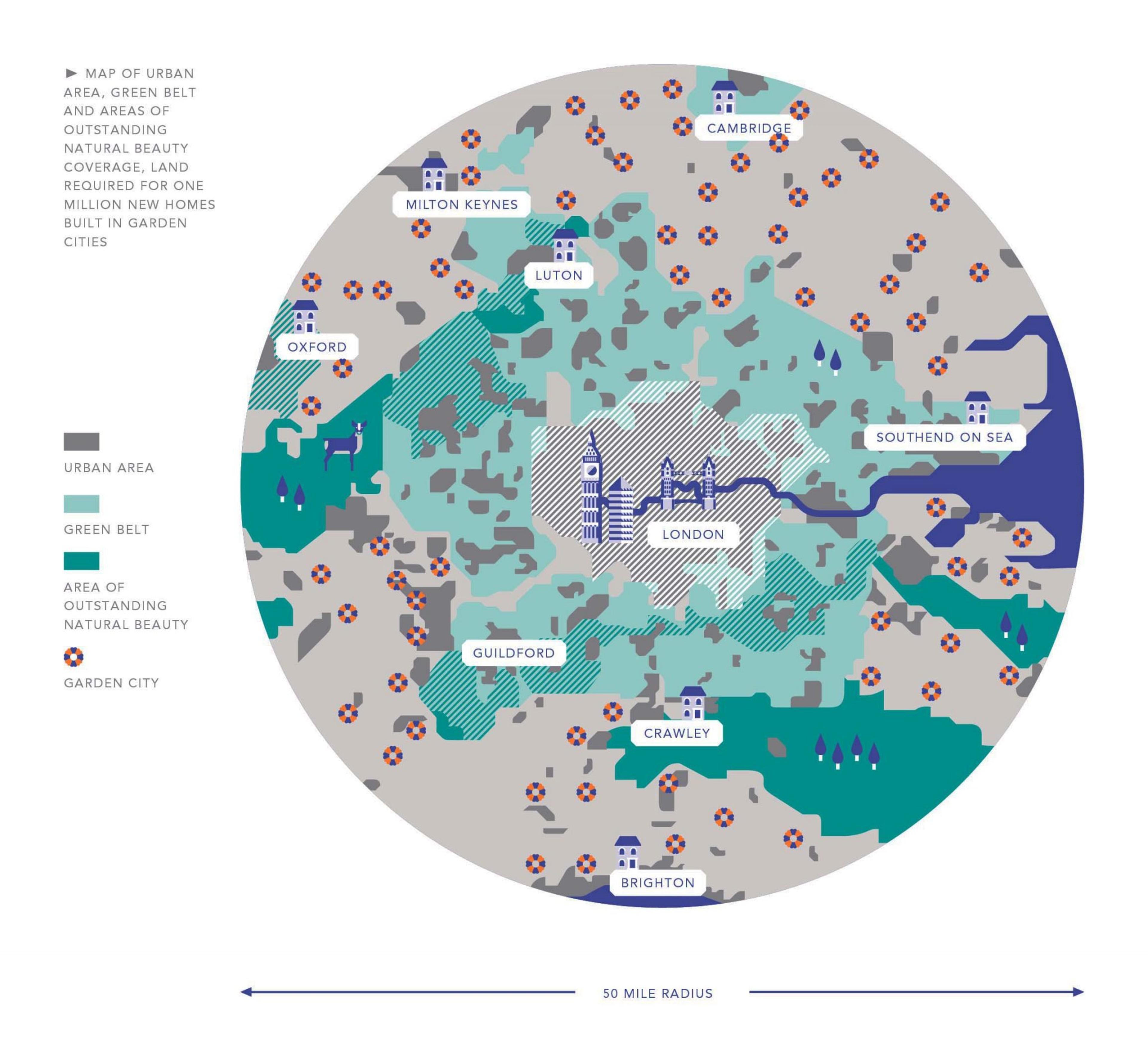- News
Leading us up the garden path? Report warns Garden City policy will leave country with shortfall of half a million homes
- Government plan to build 250,000 new homes in Garden Cities would leave a shortfall of around half a million homes between now and 2020
- London and the Home Counties alone would need 67 Garden Cities in the next 25 years to address housing shortage
- Demand could be met by brownfield development for at least the next 8 years
- Think tank calls for nation to change its mind-set on dense cities
Plans to build 250,000 homes in Garden Cities would deliver just a third of unmet demand for housing over the next five years, leaving a shortfall of around 500,000 homes between now and 2020, according to a new report from the Future Spaces Foundation (FSF).
In its second report, Vital Cities not Garden Cities: the answer to the nation’s housing shortage?, the FSF critically examines the Government’s policy of building new Garden Cities in response to the current housing crisis, suggesting instead that the focus should be on densifying existing settlements.
The report found that if all the new homes that are required were to be built in Garden Cities, 67 of these type of settlements, each with a population of 30,000, would be required in order to meet the projected shortage of one million homes in London and the Home Counties over the next 25 years. Moreover, if used as the sole solution to the current housing shortage, Garden Cities would require 675km² of land (an area bigger than urban Manchester), the equivalent of 6.8% of the unprotected and unbuilt land within a 50 mile radius of London. As an indicator of how inefficient this low-density model is, in contrast, if these one million homes were built at the relatively average gross density of a typical major town in the region such as Brighton & Hove (3,320 homes per km²) just 301 km² of unprotected and unbuilt land would be required.

Vital Cities
Dense, or vital cities, are economically and environmentally sustainable and offer residents easy access to employment, public services and shopping. Higher density settlements are also more effective in generating mixed communities, social integration and safety whilst reducing the costs of transportation and local services.
While increasing the density of some of the UK’s existing settlements may sound unfeasible, the opportunity to densify certainly exists. Indeed, while there may be a perception that our towns and cities are already overcrowded, in comparison to global cities such as Paris (21,196 people per km²) or New York (27,562), London (10,122 for inner London, and 5,199 for Greater London) and other major cities around the UK are in fact relatively low density.
The Future Spaces Foundation applied an economic model to test what the value could be of applying a higher-density model to two case study towns facing housing shortages: Birmingham in the West Midlands and Guildford in Surrey. In both cases, higher-density settlements were found to foster better transport infrastructure, industry clusters and greater economic activity, and the construction of more appropriate homes to match the housing need. The report shows that investment in new homes required for Birmingham up to 2035 will be worth £11.6 billion to the local economy and support 10,000 permanent direct construction jobs in the area over the period.
Brownfield is the new greenfield
One of the traditional arguments for the development of greenfield land to meet housing demand has been the lack of, or difficulty in opening up, brownfield land. Yet using data from local authorities, the Foundation has identified 350km² of brownfield land (equivalent to an area approximately three times the size of Bristol) that is potentially suitable for housing in their areas. In fact, the report found that local authorities in England with housing shortages have enough brownfield supply to provide houses for the population for an average of eight years. Perhaps surprisingly, the largest supply of brownfield land is in London – which also has the largest housing shortage – where there is potentially enough development land to meet demand until the late 2020s.
Ken Shuttleworth, Founder of Make Architects and Chair of the Future Spaces Foundation said:
“As a nation, we are in danger of sleepwalking into policies that will exacerbate the current crisis of housing availability, suitability and affordability, not to mention the irreversible environmental impact that will have dangerous and damaging consequences for generations to come. Our cities, and I include London in this, are, by global standards, sparsely populated, and as our report shows, still have ample possibilities for intensification. Before we even consider bulldozing greenfield sites we must explore every option possible to densify what we’ve already got. Far from being the dystopia that they are sometimes perceived as, dense, or vital cities, are efficient environmentally and economically and by incorporating smart design, can enable communities to thrive in a sustainable way.”
He added,
“We need to change the mind-set that we have in this country that means we see ‘dense’ as a dirty word; densification of existing settlements is not only vital for giving us the amount of housing that we need, but it is vital for keeping these spaces thriving.”